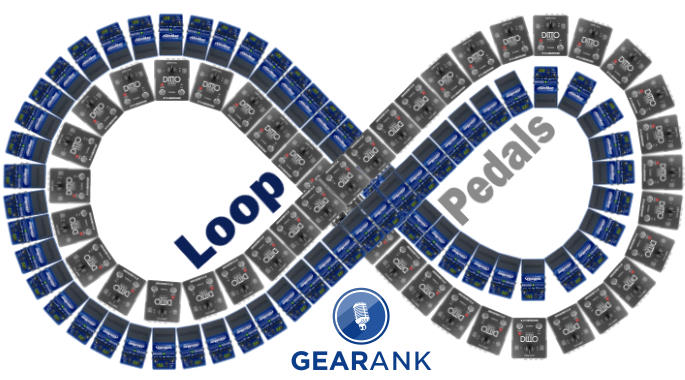
Disclosure
We recommend all products independently of 3rd parties including advertisers. We earn advertising fees from:
• • • • •

• • • • •
Amazon
As an Amazon Associate we earn from qualifying purchases.
• • • • •
More Guitar Pedals
Free built-in loopers can get a simple loop up and running, but the best looper pedal lets you do more with better control.
A basic looper can’t provide the same sound quality, control, and features as stand-alone guitar looper pedals. So, essential loop functions found on guitar processors and amps won’t be enough for live layering of tracks in performances.
If you’re looking for better sound quality and functionality, you’ll have to look into a more advanced looper pedal. And the more complex sampling and layering capabilities you need, the more you’ll need to look into the best looper pedals featured here.
Here, we help you find a capable looping machine for intricate harmonies and accompaniment, featuring nothing less than the best guitar looper pedals and tabletop units. We divided our recommendations into Compact, Multi-switch, and Tabletop categories.
Those who want simple looping can go for a compact loop pedal. Multi-switch looper pedals offer more control and memory for real-time multitrack looping. Tabletop loop stations are meant to be desktop-friendly for those who want to loop using their hands rather than their feet.
The Best Loopers Pedal and Table Top Units – May 2024
| Gearank* | SRC* | Check Price | ||||||
|---|---|---|---|---|---|---|---|---|
| Compact Size | ||||||||
 | Boss RC-1 | 93 | 3550+ | |||||
 | TC Electronic Ditto Looper | 91 | 3550+ | |||||
| Multiswitch | ||||||||
 | Boomerang III | 89 | 100+ | |||||
 | Boss RC-300 | 91 | 1050+ | |||||
| Tabletop | ||||||||
 | Boss RC-202 | 91 | 250+ | |||||
 | Boss RC-505 MkII | 91 | 125+ | |||||
Author & Contributors
Alexander Briones
I have been writing about and researching music gear for many years, all while serving as a music director at my local church. I engage in guitar playing and singer-songwriter stints, in addition to mentoring young musicians and teaching guitar and bass.
The main looper pedal that Alexander uses is the Boss RC-300 which he's been using for many years now - that thing is built to last!
The Best Looper Pedal - Compact Units
Boss RC-1 Loop Station Pedal
Cons
- One footswitch control requires some practice
- Need to buy a power adapter separately
- Not advisable for complex looping
Pros
- 24-segment display provides great visual feedback of loop time
- 12 minute recording time, enough for basic looping use
- Familiar pedal shape and function
- Compact size
- Tank tough Boss quality build
- Its simplicity and 24-segment display makes this great for beginners who are learning the ropes of looping
2024 sees the Boss RC-1 retaining its spot in this guide, the most affordable of the BOSS Loop Station series. It comes in Boss' simplistic single stompbox design, known for its tough reliability and durability. But even though it is an entry-level simple looper pedal, it has some extra features that make it stand out easily from other basic loopers.
The most noteworthy feature of the RC 1 Loop Station is its 24-segment LED indicator, which gives you visual feedback on your settings and can even show you where you are in each loop. This visual cue is excellent for timing loop controls, especially for novice musicians. This feature makes it an intuitive looper pedal that's great for beginners.
It can also hold up to 12 minutes of recording, more than most of its direct competition offer. In addition, this is a stereo looper pedal with stereo/mono connections, which makes it easy to integrate into complex gear setups.
Looper pedals Boss RC units continue to be the go-to for many guitarists. This is the best loop station for those planning on using something other than multiple loop tracks. And it is the only looper pedal you'll ever need in your signal chain. It's already cheap but can be more affordable if you get it from second-hand Looper pedal deals.
Specifications
- Total Loop Time: 12 Minutes
- Loop Tracks: 1
- Loop Memory Slot: Internal
- Audio Quality: Not Specified
- Input: 2 x 1/4" (Stereo)
- Output: 2 x 1/4" (Stereo)
- Power: DC Adapter (Optional) or 9V Battery
- Extra Feature: 24 Segment Loop Indicator, Stereo In/Out
- Dimensions: 2.375" x 5.125" x 2.875"
- Weight: 1 lb.
| Website | Source | *Rating Value |
| Music Tech | Marcus Leadley | 80/100 |
| Guitar Magazine | Editor | 80/100 |
Demo
TC Electronic Ditto Looper
Cons
- Limited to 1 track looping
- No battery operation
- Not for complex multi-track looping
Pros
- Simple operation, great for learning how to loop
- Transparent sound
- Solid build quality
- Compact and light
The TC Electronic Ditto Looper continues to be the go-to looper for those who want basic looping functionality in a compact pedal form factor.
This is a one-track looper with just one footswitch. Still, it is enough for all the basic controls, including record, playback, overdub, undo, and redo.
It will take some time to learn the different ways of stepping the footswitch to do the various functions, but it does get the job done. More importantly, it does so without taking up too much space and with less complications to your setup.
The only other control is the Loop Level knob, which lets you adjust the volume of the playback in relation to your dry signal.
But what makes the Ditto Looper a crowd favorite is its clean signal; the loops sound clean and transparent. You'll notice how cleaner it is than cheaper loopers or those built into cheap multi-effects and amps. Loops won't sound muddy, even with overdubs.
Given its compact size, the Ditto Looper is not meant for much other than basic looping functions. Its loop time is 5 minutes, which was long when it was first released but is now quite limited.
There are no memory slots for expanding its loop recording function. Another minor annoyance is the need to buy the power supply separately.
Still, the TC Electronic Ditto Looper is perfect for those who want a simple, compact, and high-quality looper. This is the best looper pedal to start your guitar looping journey.
Specifications
- Total Loop Time: 300 Seconds
- Loop Tracks: 1
- Loop Memory Slot: 1
- Audio Quality: 24-bit A/D/A
- Input: 1 x 1/4"
- Output: 1 x 1/4"
- Power: 9V DC Adapter (Sold Separately)
- Dimensions: 1.9" x 1.9" x 3.7”
- Weight: Less than 1 lb.
| Website | Source | *Rating Value |
| Guitarist Next Door | Teemu Suomala | 90/100 |
Demo
The Best Looper Pedal - Multiswitch Units
Boomerang III Phrase Sampler
Cons
- Cannot save loops into presets
- The feel of the foot switches may not be everyone's cup of tea.
Pros
- Allows for 4-track looping
- Up to 35 minutes of recording
- Versatile loop building via its switchable play styles
- Simplified interface with no LCD
- Good audio quality (24bit at 44.1Khz)
- Quiet footswitch design
The Boomerang III is a multi-switch looper designed for "live" looping performances, with up to 4 tracks and 4 different play style options.
It does away with bells and whistles like extra effects, auto rhythm, and SD card storage; instead, it focuses on providing good sound quality and an intuitive workflow ideal for live use. This results in a looper that works and sounds natural, which appeals to experienced musicians.
This one strays from the usual LCD screen interface for a multitrack looper. Instead, it retains an old-school foot pedal style, just having footswitches, knobs, and buttons. This simplifies the interface and lets you focus on looping with minimal distractions.
The play style options open the unit to different approaches, from a more structured and synced serial mode to an accessible mode that allows you to craft and play tracks that are not synced. With this, you won't feel boxed into a particular way of looping.
This unit has a robust performance-ready form factor that organizes the footswitches and controls in an easier-to-access and look-at way. It also has a distinct footswitch design that operates quietly. It is necessary for guitar loopers who don't want unwanted noise creeping into their loops.
The main drawback of the Boomerang III is its inability to store loops for future use. If you're used to metal switches, you won't like how they feel.
The Boomerang III is a great looper pedal for live use. If you're looking for a looping machine with intuitive controls and enough complexity for advanced looping techniques, then this is the best looping pedal for you.
Specifications
- Total Loop Time: Up to 35 minutes (2100 Seconds)
- Loop Tracks: 4
- Loop Memory Slot: Up to 4
- Audio Quality: Output (24-bit / 48kHz)
- Input:2 x 1/4" (L/R), 1 x Rang Pedal Link
- Output: 2 x 1/4" (L/R), 1 x Rang Pedal Link
- USB: None
- Power: 9V DC Power Supply
- Dimensions:9” x 2” x 6”
- Weight: 3.59 lbs.
| Website | Source | *Rating Value |
| Sound on Sound | David Greeves | 95/100 |
| Premier Guitar | Charles Saufley | 80/100 |
Demo
Boss RC-300 Loop Station
After a few months of exposure to live looping, my curiosity got better - I went straight for a multitrack and multi-switch pedal with stereo loops, the Boss RC-300. It quickly became central to my acoustic and live looping sets. The RC-300 was the flagship Boss Loop Station model for many years and was widely considered the best looping pedal.
It was beyond being just a looper pedal, with expanded looping and input/output options for crafting complex loop sequences. With a Boss stereo looper engine and recording time of up to 10,800 seconds (3 hours), this loop pedal has many things to do. This powerful looper pedal also can record, play, and overdub 3 simultaneous tracks with dedicated start and stop controls.
To do all this, it follows the typical guitar processor template, with multiple footswitches, an expression pedal, and expanded input/output options. In addition to its looper function, it has built-in effects and drum loops for accompaniment. I've listed its detailed specifications below.
Although the RC-300 was the line's flagship model, Boss has since released the RC-600, a more expensive looper with six simultaneous tracks, up to 13 hours of recording time, and other improved features. However, it is getting some flak due to bugs, so it hasn't replaced the RC 300 as the best looper pedal yet.
Tech Specs
- Total Loop Time: 10,800 Seconds (3 Hours)
- Simultaneous Loop Tracks: 3
- Loop Memory Slot: 99 Presets
- Audio Quality: 16-bit A/D/A - 44.1 kHz Sample Rate
- Input: 2 x 1/4" (Stereo), 1 x XLR (Mic), 1 x 1/8" (Aux), MIDI
- Output: 2 x 1/4" (Main), 2 x 1/4" (Sub), 1 x 1/4" (Headphones)
- USB: USB 2.0
- Power: 9V DC Adapter
- Extra Feature: Built-in Effects,
- Dimensions: 21.125" x 9.125” x 3”
- Weight: 8.7 lbs.
Loopers are mini-recorders that give instant playback, overdub, and stop control, meaning that audio quality is paramount. Thankfully, the Boss RC-300 is not lacking in this department, with its 16-bit A/DA conversion at 44.1 kHz sample rate is CD-quality audio. This is widely considered the best audio quality that our ears can perceive. Some even consider higher sampling rates to be a waste of memory space.
Still, manufacturers upped their game, including Boss, which now utilizes 32-bit audio in the new RC-600. The lucky ones who have already tried newer loopers report improved sound quality and headroom, which makes them better at retaining sound fidelity when doing multiple overdubs. But wait to count out the RC-300 because it is still a great-sounding looper—to my ears, it reproduces the sound and nuances of my acoustics and voice really well, even when doing multiple overdubs.
Using the unit's built-in direct audio recording feature, I've uploaded audio samples in my extended review of the Boss RC-300.
Given its big frame, the Boss RC-300 provides generous control over loops. It has two dedicated footswitches per track, one for rec/overdub/play and the other for stop and delete. It also has a dedicated footswitch for starting and stopping all three tracks, and another one can be assigned to engage effects and other functions. I use the assignable switch as a "Mic Mute" control to record guitar parts without sound from the mic bleeding in. The built-in expression pedal is also assignable, but I use it primarily for volume control, be it as a whole or for controlling the volume of tracks or drum loops.
In addition to footswitches, the RC-300 comes with multiple knobs for master and rhythm volume adjustment and for tweaking input levels (aux, guitar, and mic). It also houses various buttons along with a compact display unit, which is valuable for changing settings and parameters, which should ideally be done before performing live. The buttons are self-explanatory and can assign lengths for each track, adjust drum loop settings, and tweak effects.
Boss even made it possible to rename presets by selecting the letters through the unit's central rotary knob. It also has 3 fader knobs that provide tactile independent control over the volume of each of the 3 tracks. For live performances and practicing, the controls are satisfactory in getting the job done, so much so that I have yet to have the itch to upgrade to a newer model until the RC-600 is locally available.
The footswitches on the RC-300 have a simple yet effective configuration, similar to having 3 loopers positioned side-by-side. Once I got the hang of the timing of the footswitches, using them efficiently quickly became second nature. And I still prefer its format over newer loopers. But it's only sometimes rainbows and butterflies because the menu system requires much time and effort to properly utilize. The RC-300's input and output flexibility requires diving into menus for essential parameters like track level, recording level, and output.
There are also plenty of loop-related settings, including play modes, stop modes, loop sync, and many more. Effects assignment and parameters are also hidden in the menu, and the same goes for assigning different actions to the Loop FX switch and the expression pedal. For consistent volume and control between presets, I duplicate presets I am happy with and use them as a base template for other songs. This way, I save more time setting up presets every time I start working on a song.
The RC-300 has stereo inputs, an XLR input with phantom power, and an Aux input for playing with backing tracks to accommodate different instruments and sound sources. Each one comes with dedicated input level knobs that can be blended to taste. Unfortunately, the looper considers all these input ports as a single input signal. It doesn't allow the routing of different inputs into dedicated tracks. This is a big letdown because sometimes I need to loop my vocals and guitars separately, much like it's done in recording. Thankfully, there are workarounds like using compact mixers and signal switchers on the input. If I want to record the guitar part while singing, I turn off the looped mic signal and use a second mic that goes straight to PA. Still, these workarounds could be better and often require more rounds of loop building - which ultimately prolongs song buildup.
What the RC-300 lacks in input options, it makes up for with its four assignable output ports. Each of the three loop tracks has its own output route setting, allowing each one to have its dedicated output port. This setup requires more cables and mixer space, but it will enable the sound engineer to mix the sound on a per-track basis—too bad input routing is not as good as this. Finally, it also has a headphone output for quiet practice.
See the rest of the review plus get audio samples and a video demonstration. Note that newer Boss Loop Stations are now available, but there are still a few Boss RC-300 units from major retailers.
| Website | Source | *Rating Value |
| Equipboard | sanjeeanand | 100/100 |
| Gearank | Alexander Briones | 95/100 |
The Best Tabletop Loopers
Boss RC-202 Tabletop Looper
Cons
- Limited 2-track looping
Pros
- Multi-track looping up to 2-tracks
- Generous number of control options are available per track
- DJ-friendly style interface and controls
- Multiple input/output options
- Capable of using multiple effects
- Rugged and reliable
The RC-202 is a tabletop Boss looper for those who want to use their hands when triggering loops. Tabletop loopers are ideal for DJs and electronic musicians. Still, they are also quickly becoming a
staple for home studio use.
It sports a colorful interface similar to the bigger RC-505. It is more compact and has enough controls for 2 simultaneous tracks.
Its colorful buttons and big knobs make it easily blend with other DJ decks and mixers - both in terms of looks and workflow.
The looper controls follow the same design but are bigger, making them pop out prominently when looking at the interface as a whole. Each track has a big switch that triggers record, play, and overdub, while the smaller switch triggers stop, undo, and erase.
The apparent downside to its tabletop design is that it's meant for something other than guitarists who prefer hands-free foot control over looping. However, since many guitarists have adapted to desktop home studio setups, the RC-202 can still be a good looper choice.
This 2-track looper gives you a lot of memory to play with loops, up to 3 hours, to be exact. You can then save the loops that you create into any of its 64 phrase memories.
And given its Boss DNA, the RC-202 lets you use four input and four-track effects simultaneously, expanding the sonic palette you can use as you loop.
It also has a foot controller input and MIDI In/Out, allowing hands-free control via outboard gear.
The Boss RC-202 is a great tabletop looper for those who want to incorporate 2-track looping into their performances.
Specifications
- Total Loop Time: Up to 3 Hours
- Simultaneous Loop Tracks: 2
- Loop Memory Slot: 64 Phrase Memories
- Audio Quality: 16-bit A/D/A - 44.1 kHz Sample Rate
- Input: 1 x XLR (Mic), 2 x 1/4" (Instrument: L / Mono, R), 1 x 1/8" TRS (Aux), 1 x 1/4" (Footswitch/Expression Pedal)
- Output: 2 x 1/4" (Line Out), 1 x 1/8" Headphones,
- USB: Type B (DAW integration, Import/Export WAV)
- MIDI: In/Out
- Power: AC Adapter (Included)
- Extra Feature: Built-in Effects, 17 Rhythm Patterns
- Dimensions: 9.44" x 2.19” x 6.94”
- Weight: 2.125 lbs.
| Website | Source | *Rating Value |
| Sound on Sound | Paul Nagle | 95/100 |
Demo
Boss RC-505 MkII Loopstation
Cons
- Quite heavy and bulky
- It's wide array of features can be overwhelming for beginners
- Not ideal for those who want floor based loopers
Pros
- Superbly versatile looper that allows for so much control over loops
- 5 independent stereo tracks to play with, each one having dedicated trigger switches
- Nifty Bounce feature lets you combine 2-tracks to free up one track.
- DJ style interface with tabletop friendly workflow
- Multiple input/output options
- Capable of using multiple effects
- Rugged and reliable
Complex live looping routines are incredible to watch, requiring high-tech equipment matching the musician's creativity and skill. This is precisely what flagship loopers like the RC-505 MkII are meant to provide: multitrack looping with a slew of functions for deep control over each loop.
The Boss RC-505 MkII has superseded the original RC-505 with longer recording time, better audio quality, enhanced effects, more input and output options, improved routing, and expanded controls.
Speaking of control options, the fader is noticeably more significant than the original, and there are more ways to apply effects and EQ on individual tracks. The overall workflow is improved to allow for more looping possibilities. The screen size is also a bit bigger, which works well with its expanded controls. Another new feature, called Mark, lets you "mark" and revert your overdubs to a particular "marked" overdub.
Like the original, it gives you five loop tracks to play with, 99 phrase memories, and it has built-in drum kits and rhythm patterns. These features allow many ways to build loops, which you can't get from other looper hardware.
If five tracks are not enough, the MkII now has "bounce," which combines the sound of two tracks, freeing up one track to add another loop layer. By using bounce, you can have virtually limitless track space.
As expected, the Mk2 has a longer list of Boss digital effects that can be implemented in more ways.
Finally, it can provide phantom power to mics that need it and has MIDI and USB connectivity. The downside with all these features and improvements is that the MkII is more extensive and heavier.
The Boss RC-505 MkII is the most feature-packed tabletop looper currently available. It is well worth investing in if you need a hand-controlled looper. The RC-505 MkII is easily one of the best looper pedals Boss has produced to date.
Specifications
- Total Loop Time: Up to 13 Hours
- Simultaneous Loop Tracks: 5
- Loop Memory Slot: 99 Presets
- Audio Quality: 32-bit A/D/A - 44.1 kHz Sample Rate
- Input: 2 x XLR (Balanced, Phantom power), 4 x 1/4" (Stereo Instrument: L / Mono, R)
- Output: 2 x 1/4" (L / Mono, R), 4 x 1/4" (Sub Out 1/2: L / Mono, R), 1 x 1/4" Headphones,
- USB: Type B
- Power: AC Adapter (Included)
- Extra Feature: Built-in Effects, 85 Rhythm Patterns
- Dimensions: 16.53" x 2.63” x 9.21”
- Weight: 4 lbs.
| Website | Source | *Rating Value |
| Music Radar | Robbie Stamp | 90/100 |
| Synthopia | Nick Batt | 96/100 |
Demo
Things to Consider When Buying a Looper
- While compact looping pedals can get things done, controlling them with their single footswitch can be challenging. Manufacturers usually require you to do various "dance" steps to trigger functions like recording, playback, undo and redo. These steps include double steps, hold steps, and quick release.
Multiswitch loopers offer easier hands-free control of the loops since they often have two or more footswitches dedicated to each loop. The apparent downside of multi-switch loopers is their bigger and bulkier profile. But these powerful looper pedals are ideal for utilizing advanced guitar and vocal looping techniques.
Some looper pedals offer in-depth control over the loops, including tap tempo, volume, quantize, adding effects, half speed, and more. Others even come with onboard rhythm tracks and drum loops. This also applies to desktop looper stations.
- Over two decades ago, DigiTech released the PDS 8000 looper pedal, which had a total loop time of 8 seconds. These days, some loopers can store many hours of high-fidelity loops and even more via USB or memory cards. Still, you have to note that more is not necessarily better, especially if you're going for basic one-track looping and overdubbing, as evidenced by the popularity of the TC-Electronic Ditto Looper with its 5-minute total loop time.
But you'll want more loop time and multiple memory slots if you plan to craft, organize, and utilize different loops. Multiswitch pedals tend to have more memory, but some compact pedals offer expandable memory and memory slots. Thanks to improvements in storage space and speed technology, most loop pedals now offer unlimited overdubs that don't degrade in quality.
- Single-track Loopers are generally good enough for most guitarists, especially those who want basic looping and are already playing with a band. Their straightforward operation and simplicity make them easy to use, and their compact size makes finding space on a pedalboard easy.
Multi-track Loopers offer more control and allow for crafting more complex loops. However, some have extra bulk, a steeper learning curve, and added cost. This looping station type is usually preferred by guitarists who also sing and one-man-band performers who want in-depth control over every loop.
- For basic mono setups, a compact looper pedal with one input and one output port is enough. More complex rigs or keyboard instruments with stereo outputs will require stereo input and output ports, which are provided by some of our best guitar pedals in our recommended list above. Aux input is a nice plus, as it allows you to jam with your favorite tracks or even store them as loops. A few pedals have headphones out, which is nifty for quiet practice.
Some loop pedals with USB connectivity allow you to save and manage your loops on your computer, which is handy if you're gathering musical ideas. MIDI compatibility is also crucial to integrate a looper with MIDI clock-compatible devices like drum machines.
In addition to outputs, manufacturers are becoming more aware of the need for independent looping and control over different inputs. Not being able to separately process tracks and inputs is a common issue with older loopers; thankfully, recent releases address this. An XLR mic input is a must if you plan on looping your vocals.
- Pedalboard space is an ever-decreasing resource, so careful planning is recommended before buying your pedal. For this reason, we provided the dimensions of each unit so you can prepare your board ahead of time. We've also included weight so you can gauge their portability.
- While the focus is on looping, it doesn't hurt to have extra features like built-in metronomes, rhythms, and effects. Some big loopers even come with Vocal Effects like formant shift and Vocoder. But too much isn't always good, especially if it will keep you from being productive and inspired. The bottom line is just get one with the features you need, or don't waste too much time on things you won't use for your performances or song ideas.
Loop Controls
Total Loop Time and Memory Slots
Number of Loop Tracks
Connectivity
Size and Weight
Extra Features
Best Loop Pedal and Tabletop Unit Selection Methodology
The first edition was published in 2017. The current edition was published on April 23, 2024
As much as we would like to feature custom-made loopers, we only recommend those readily available from US-based retailers. This means that we can't feature the massive Chewie II looper rig, which was Ed Sheeran's old looping pedal. We also limited the scope to loopers with a minimum record time of 3 minutes—this avoided shortlisting some looper/delay pedal combos.
For this edition, we ended up with a short list of 31 loopers and gathered over 22,300 relevant reviews and ratings, all of which were processed by the Gearank Algorithm to produce rating scores out of 100 for each one. The resulting scores were used to select only the highest-rated models to recommend above. Finally, we divided the list into three categories: Compact, multiswitch pedals, and Tabletop. For more information about our methods, see How Gearank Works.
Because market ratings change, some loopers, like the Electro Harmonix 720 Stereo Looper and Pigtronix Infinity Looper pedal, have dropped off the market. Some popular loopers, like the Headrush Looper, MXR M303 Clone Looper, Singular Sound Aeros Loop, and Nux Loop Core, didn't rate high enough. Newer pedals like the Sheeran Looper need more ratings, so they aren't considered. But don't let this stop you from checking out these newer releases.
About the Author and Contributors
Here are the key people and sources involved in this guide's production - click on linked names for information about their music industry backgrounds.
Lead Author & Researcher
Alexander Briones
I have been writing about and researching music gear for many years, all while serving as a music director at my local church. I engage in guitar playing and singer-songwriter stints, in addition to mentoring young musicians and teaching guitar and bass.
Here are some of the acoustic guitars and related gear I own: Martin OMCPA4, Martin DCX1E, Takamine GY11ME, Ibanez AEL20E, Yamaha C40, Boss RC-300 Loop Station, Laney LA35C Acoustic Amp.
Contributors
Jason Horton: Editing and Illustrating.
Media
Main/Top Image: By Gearank.com © Copyright 2020.
The videos above have been embedded in accordance with YouTube's Terms of Service.
The individual product images were sourced from websites, promotional materials or supporting documentation provided by their respective manufacturers except for the additional Boss RC-300 photographs which were taken by the author.
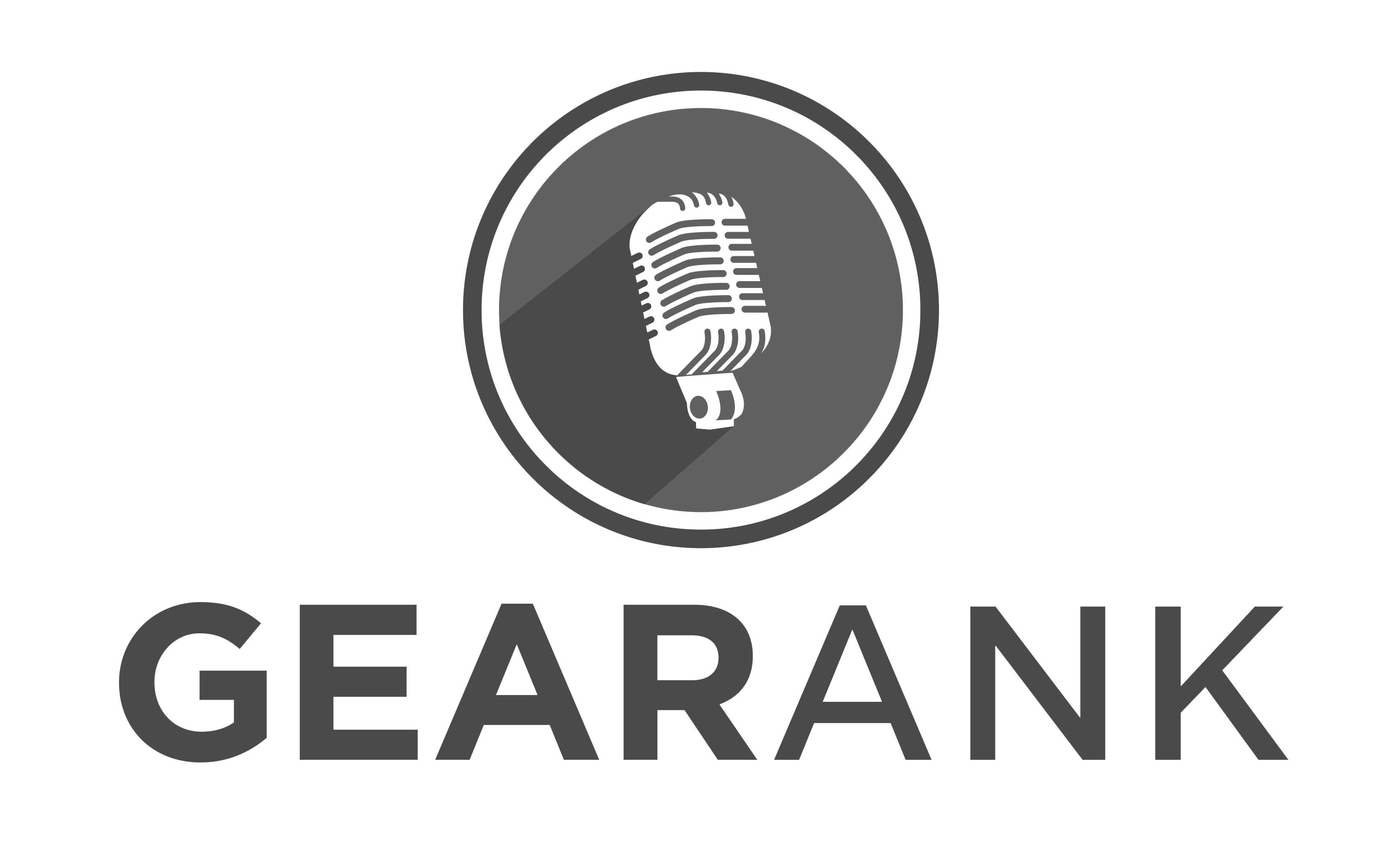
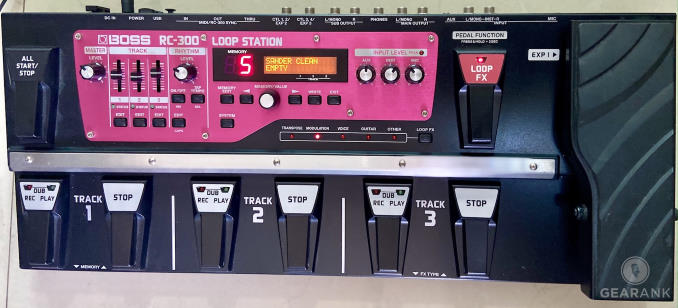
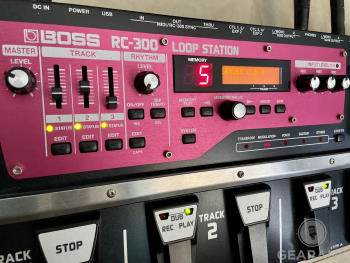


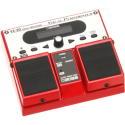
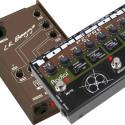
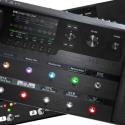
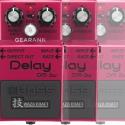
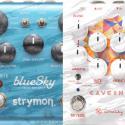
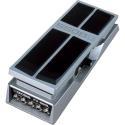
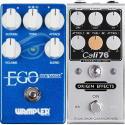
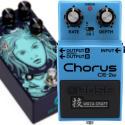
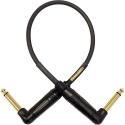
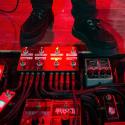
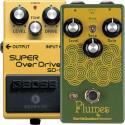
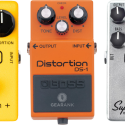
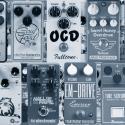
Hello all,
Posting this here after reading the “read this before contacting us” page, so hopefully this is an okay place for me to ask my question 🙂
I’m a vocalist/beat boxer looking for a pedal that has at least two tracks, for verse/chorus stuff, etc. that also has some built-in effects (because since I’m not a guitarist I don’t already own any effects pedals and would ideally keep it that way).
My research has led me to the Line 6 DL4, but alas it only has one loop track which feels like a dealbreaker. The Boomerang seems pretty awesome, except that you can’t save any of your loops (unless I’m misunderstanding).
Do y’all have any suggestions on pedals I should be looking at for my specific desires? Thank you so much!
If you’re looking to do complex multi-track looping, then you should look into the Boss RC-505 MkII, Boss RC-300 or the Boss RC-500. These are bulky units, but offer more features and realtime control.
There are smaller options but they have fewer looping tracks and provide less control.
Thank you!!
The following loopers came off our recommended list when we published the November 2022 Edition:
Our March 2022 Edition saw the following loopers coming off the recommended list:
How can the Headrush Looperboard not be on here. Admittedly, it had a rough start with the first version of the firmware, but now? It is incredible. I had the RC300 and there is no comparison whatsoever. The Headrush is an amazing audio interface, amazing preamps, incredibly flexible looper with 4 stereo tracks, backing tracks, up to 9 hours loop lengths, 7″ color touchscreen, complete control on internal routing, amazing fx, USB A x2, SD, midi…etc. BIG MISS not having this on you list. Like leaving Tesla off the best cars list…
The Headrush Looperboard was not selected for our short-list because there are large numbers of negative reports about the product as you can see at major retailers such as Guitar Center, Musician’s Friend, Amazon or Sweetwater.
If the new firmware has fixed the problems, then that will show up in future reviews and then we may consider taking a closer look at it.
Publication of our January 2022 Edition resulted in the following loopers coming off the recommended list above:
We have removed the Boss RC-30 Loop Station from the recommended list above due to it no longer being available.
We have removed the Boss RC-3 Loop Station due to a lack of availability.
As a result of our January 2021 update, the following loopers came off the recommended list above, but you can still see our analysis of them:
As a result of our June 2020 update, the following loopers came off the recommended list above, but you can still see our analysis of them:
The expandability of the JamMan system is about the best I can imagine – with three or four different XT pedals, being able to not only sync one player, but many, that’s just excellent.
Not including the Line 6 looper makes this whole review suspect – it’s by far the best.
I assume you’re referring to the JM4.
It was on our short-list but didn’t have high enough ratings for us to include it in our recommended list above – you can see the current Line 6 JM4 rating here.
It appears that the specifications for the RC-3 aren’t quite correct… 99 slots, no memory card slot. Probably doesn’t have JamSync feature (Digitech probably wouldn’t license that to Boss).
Thanks for pointing this out Craig, I have corrected the specifications.
As a result of our January 2019 update the following loopers came off our recommended list above but you can still read our analysis of them:
No mention of the boomerang?
Can’t believe the boss rc300 is rated higher than the infinity. Sound quality on the rc is was below the infinity which is a huge factor for me.
Hi,
I would like to clarify that the Boss RC-3 is does not have 24-bit playback; it has 16-bit playback and is commonly regarded for having mediocre sound quality. This is the biggest ( if not only ) reason it is not the number one selling looper in my opinion. The Ditto x2 is probably the highest quality playback. I expect better research from a page dedicated to gear.. If you’re hiring let me know.
Hi Wolvebird,
Thank you very much for pointing that out – I was the editor for this guide and I missed the mistake, but I’ve fixed it now.